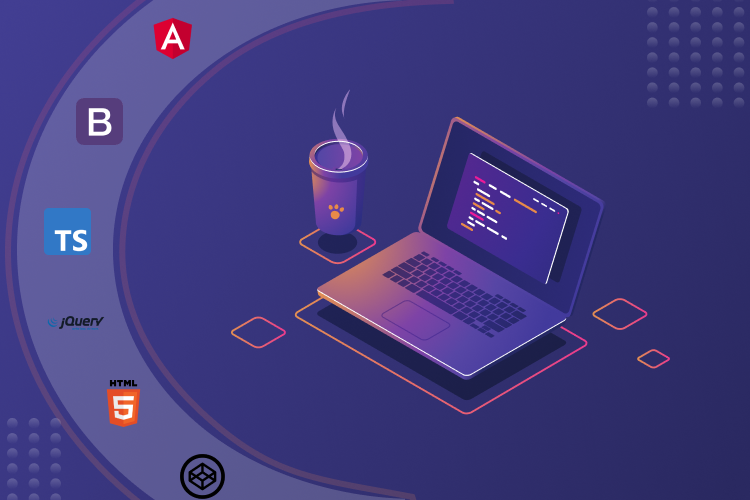Maximizing success when outsourcing front-end development requires effective communication and collaboration. This article will cover best practices for ensuring a smooth and successful collaboration with your chosen vendor.
We’ll discuss how to match with a front-end development company that understands your vision and requirements, how to stay on track and within budget, and how to handle any issues that may arise during the development process. Additionally, we will discuss what to do if you are not satisfied with the final product and how to resolve potential disputes.
By the end of this article, you’ll have a comprehensive understanding of how to optimize your first outsourcing experience and achieve the best possible results for your front-end development project.
How can I ensure that my project stays on track and within budget?
To ensure that your project stays on track and within budget, it’s important to have clear communication and regular progress updates with the front-end development company. This will allow you to stay informed about the project’s status and make any necessary changes or adjustments along the way.
It’s also a good idea to establish a timeline and budget for the project upfront and to regularly review and assess progress against these goals. This will help identify potential issues or challenges and allow you to take action to keep the project on track.
How do I ensure effective communication and collaboration with the vendor?
Front-end development outsourcing projects depend on effective communication and collaboration for their success. To ensure effective communication and cooperation with your front-end development vendor, establish clear channels and define roles and responsibilities.
Use a project management tool to track progress, assign tasks, communicate with the vendor, and establish clear project goals and timelines. Encourage open and transparent communication with the provider, and be open to feedback and suggestions.
How can I guarantee the vendor understands my vision and requirements?
To guarantee that the front-end development company understands your vision and requirements, it’s essential to have clear and detailed discussions during the scope of work phase of the project. This will involve outlining your specific goals and objectives and any design guidelines or specifications that need to be followed.
It’s also a good idea to provide examples or references to help the front-end development company understand your vision and requirements. This could include samples of websites or apps with the look and feel you are aiming for, or examples of specific features and functionality you would like.
What steps should I take to ensure a smooth transition when the project is complete?
For the project to be successful, it’s essential to have a smooth transition when the project is complete. To ensure a seamless transition, it is indispensable to plan ahead, communicate with the vendor, test the final product, provide training to your team, and document the process.
Start planning for the transition early in the project, and keep the vendor informed of your plans. Test the final product thoroughly to ensure that it meets your expectations and that any issues have been addressed. Providing your team with training on using the final product and any related processes goes a long way toward improving this process.
Finally, document the process for using the final product and any related processes to ensure that everyone is on the same page and that there are clear instructions for future reference.
What should I do if I’m not satisfied with the final product?
If you’re unsatisfied with the final product, it’s important to communicate your concerns with the front-end development company as soon as possible. It may be possible to work with the vendor to address any issues and come to a resolution that meets your needs. But, if you can’t resolve the issue with the vendor, you may need to consider alternative dispute resolution methods such as mediation or arbitration.
It’s a good idea to have a dispute resolution clause in your contract with the front-end development company outlining the steps to be taken in the event of a dispute. This can help prevent any issues from escalating, and provide a transparent process for resolving them should they arise. If all else fails, you may need to consider ending the collaboration and finding a new vendor to complete the project.
How do I prepare for potential disputes?
To prepare for potential disputes, it’s crucial to have a detailed contract outlining the terms of the collaboration. It should include the scope of work detailing the front-end development company’s specific tasks and responsibilities, as well as the timeline and budget for the project. A dispute resolution clause outlining the steps to be taken in the event of a dispute is crucial in these cases.
As said, effective communication and collaboration can also help prevent disputes from arising. Establish clear communication channels with the front-end development company and encourage open and transparent communication. Regular progress updates and reviews can also help identify potential issues before they become major problems.
The bottom line: follow the best practices
Outsourcing front-end development can be a great way to access specialized skills and expertise, save on labor costs, and free up internal resources. However, it’s important to consider factors such as the vendor’s technical skills, communication and collaboration abilities, and cultural fit with your company. Establishing clear project goals and timelines, as well as a detailed contract outlining the terms of the collaboration, is also essential.
Following these best practices for collaborating with an outsourcing front-end development company can ensure a smooth and successful project and minimize the risk of disputes.


